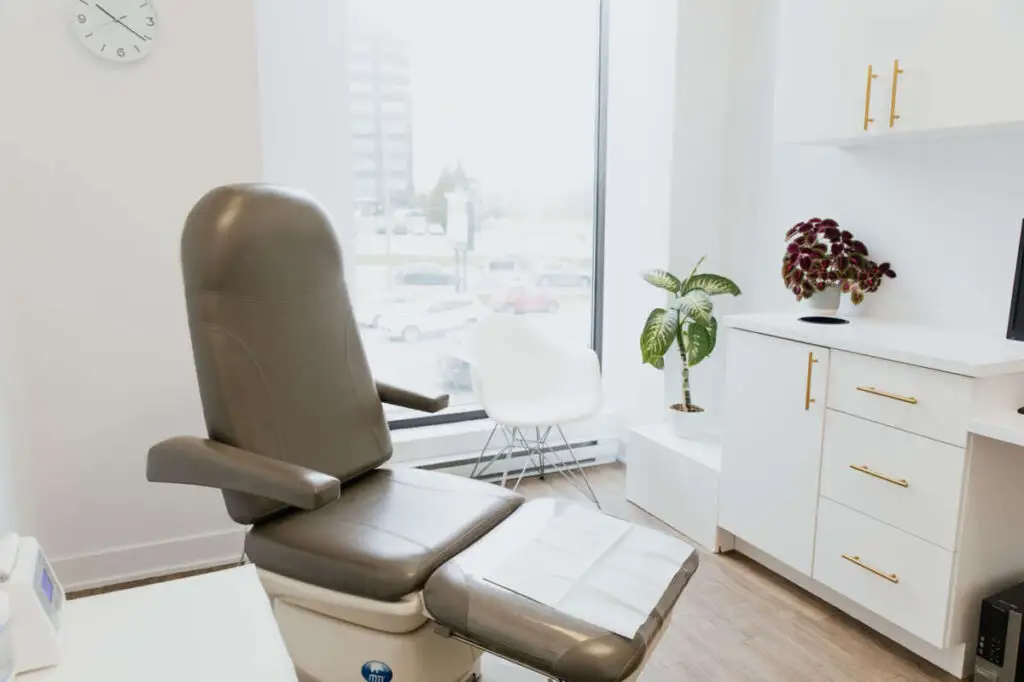
Welcome to PiedRéseau Saint-Léonard foot clinic !
A team that takes at heart the care of your feet !
Elevator & large parking space available.
We accept new patients, with or without a reference
PiedRéseau Saint-Léonard
6424 Rue Jean-Talon Est #229,
Saint-Léonard, QC H1S 1M8
directions
1-438 795-2109 Online appointments available
Monday
8:00 - 20:00
Tuesday
9:00 - 19:00
Wednesday
8:00 - 19:00
Thursday
8:00 - 20:00
Friday
8:00 - 15:00
A clinic that treats you like a member of the family
Located in Saint-Léonard, PiedRéseau Saint-Léonard strives to offer you highly personalized treatment, using the latest equipment. This may include therapeutic laser, a musculoskeletal ultrasound, 3D scanning of the foot and a postural imaging system that is of great help in your treatment.
Our spacious and modern clinic also comes with a welcoming atmosphere to put you fully at ease. There is even a setup for children and families.
Colleagues and also long-term friends from University, Dre Paryse Mayhew and Gabriel Cartier, podiatrist treats you like a member of her family by offering you personalized service and being attentive to your needs. Our podiatrists have a very human approach.
This ensures you can count on a complete and in-depth evaluation.









Frequent problems
- Pain : foot, ankle, leg, knee, hip and lower back
- Ingrown toenail (onychocryptosis)
- Corns, calluses and severe corns
- Heel spur (Lenoir’s thorn)
- Foot bunion (hallux valgus)
- Leg disorders caused by venous insufficiency
- Osteoarthritis of the knee
- Big toe osteoarthritis (Hallux rigidus)
- Diabetic foot ulcer : symptoms and treatments
- Foot arthritis : symptoms and treatments
- Foot blisters : symptoms and treatments
- Functional hallux limitus
- Hematoma under the toenail
- Joint wear and tear : symptoms and treatments
- Toenail trauma : symptoms and treatments
Treatments provided
- Plantar orthotics: types, benefits, and adaptation tips
- Cortisone injections
- Foot care – Nails, corns and calluses treatment
- Evaluating Children’s Feet
- Biomechanical exam : symptoms and treatments
- Foot ultrasound imaging
- Ultrasound guided injection
- Nail culture : importance, advantages and procedure
- Therapeutic foot taping
- Manual foot therapy : personalized treatment plan
- Postural evaluation
- 2D and 3D digital imaging
- Orthopaedic shoes : types and benefits
- Podopediatrics treatments
- Stress fracture in the foot
Responsible for personal information/confidentiality: Marie-Michèle Gagné-Rae 514-903-9333
Online appointement available!
Our secretaries are available to answer your questions: 514-903-9333
Foot care, callus removal or simple nail trimming: Please call directly at the clinic.
Please note that if you are seeking podiatry services following a work-related accident (CNESST) or a road accident (SAAQ), please contact us before your appointment to obtain more information about the reimbursement procedures.

